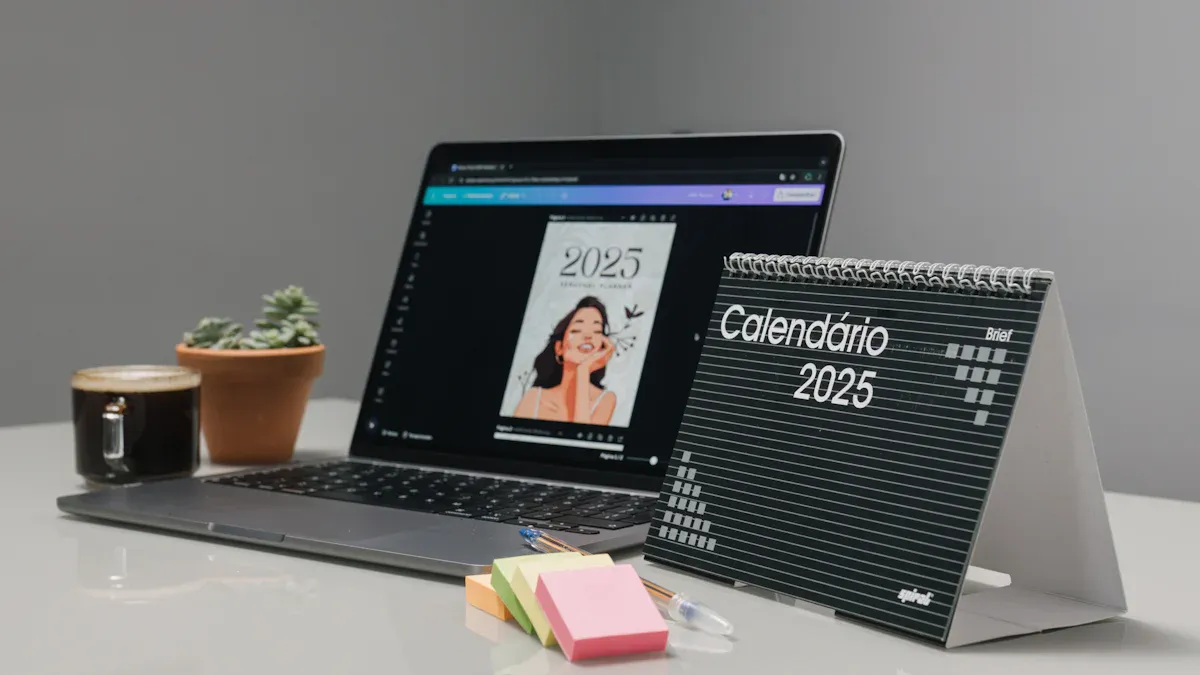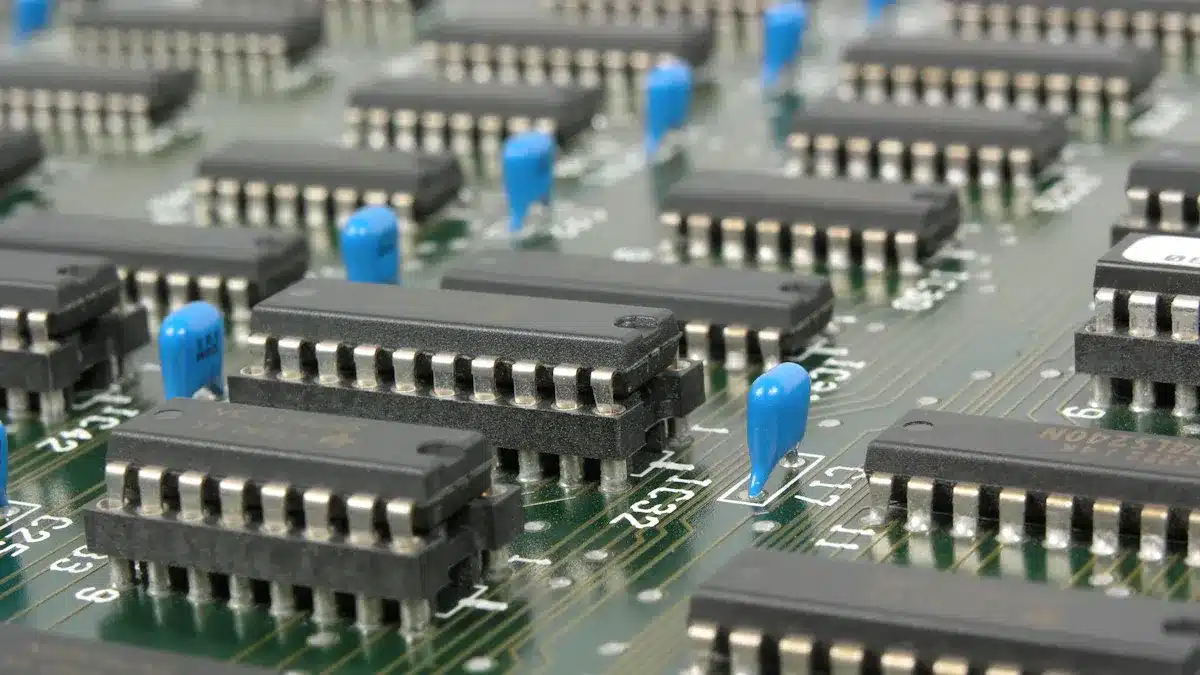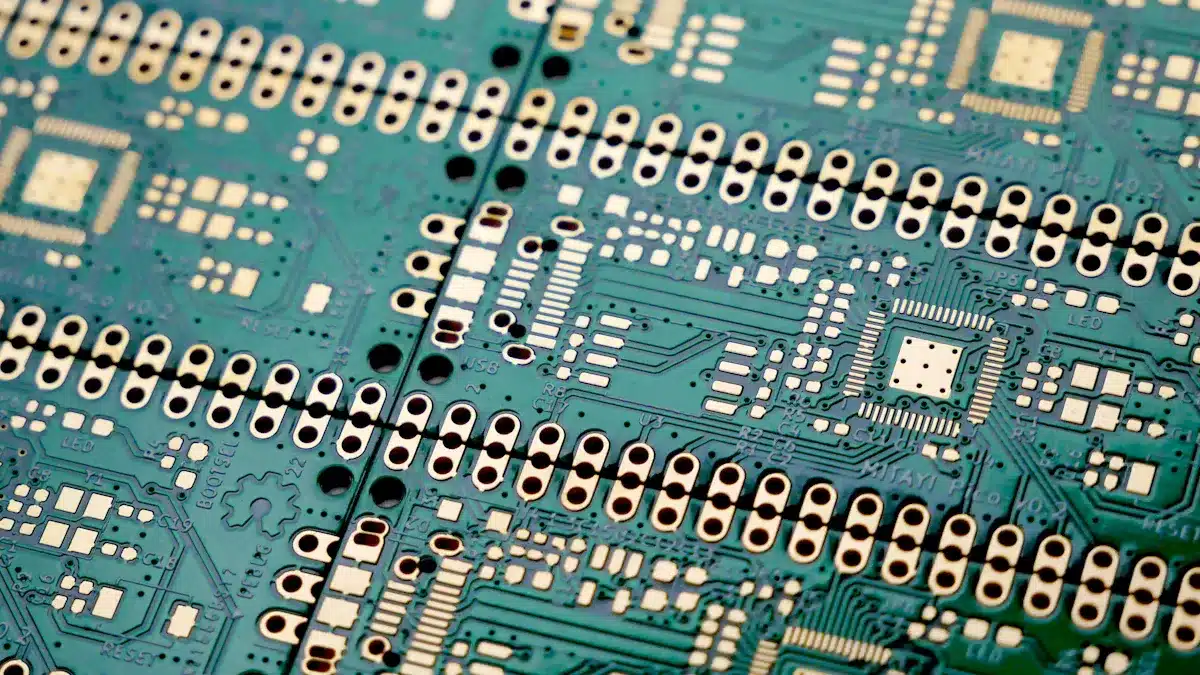
As you look into electronics, you will see free PCB design software is becoming more important. In 2025, the market for these tools will be worth USD 4.08 billion. By 2032, experts think it will grow to USD 10.78 billion. This fast growth, with a yearly increase of 14.9%, shows how important these tools are for designers and hobbyists. Using free software lets you start PCB design without spending a lot of money.
Key Takeaways
Free PCB design tools are important for hobbyists and professionals. They let you design without paying money.
When picking PCB design software, think about how easy it is to use. Also, check the features, community help, and if it works with other tools.
Tools like CircuitMaker and UpVerter have teamwork features. These make it easier to share projects and talk with others.
Find software that has key features like 3D views and design rule checking. These will help you improve your design process.
Starting with free tools helps you learn and build your skills. Then, you can move to paid software for more advanced features.
Top Free PCB Design Software

In 2025, free PCB design software is very important for hobbyists and professionals. You can find many tools for different needs, from beginners to experts. When choosing the best free PCB design software, think about usability, features, community support, and how well it works with other tools. Here are some of the best options you can find:
1. KiCad
KiCad is a favorite among hobbyists and students. It has many features, but it can feel a bit confusing. It works well for beginners, but it does not have some advanced tools like Altium Designer.
2. EasyEDA
EasyEDA is great because you can use it online. You can access it from any device with internet. Here are some special features:
Unique Features | Description |
|---|---|
Extensive Import/Export Capabilities | Works with many formats like Altium and KiCad. |
Robust Backup Options | Provides local and cloud backup for better data safety. |
Lightweight and Fast Experience | Needs fewer resources for a smoother design process. |
3. Fritzing
Fritzing is made for beginners and teachers. It has a special breadboard view that helps show how circuits connect. This tool is free and open-source, so anyone can learn PCB design.
4. Autodesk Eagle
Autodesk Eagle is a well-known name in PCB design. But its free version has some limits:
Limitation | Description |
|---|---|
Maximum board size | |
Number of schematic sheets | Up to 2 schematic sheets for each project |
Commercial use | Only for non-commercial purposes |
5. DesignSpark PCB
DesignSpark PCB is known for being easy to use. It has a simple interface, which is great for beginners. Here are some benefits:
Advantage | Description |
|---|---|
Free Access | Totally free with no limits on commercial use. |
Integrated CAD Library | Access to millions of component models makes designing easier. |
6. CircuitMaker
CircuitMaker helps PCB designers work together. It lets users share projects and has version control features. This makes teamwork easier and better.
7. UpVerter
UpVerter is a cloud-based tool that allows real-time teamwork. You can share designs easily and talk directly with team members in the app.
8. PCBWeb Designer
PCBWeb Designer has a friendly interface and connects with many component suppliers. This makes finding parts for your designs easy.
9. DipTrace (Free Version)
DipTrace has a free version with basic features for PCB design. It is good for small projects and is easy to learn.
10. ZenitPCB
ZenitPCB is perfect for small PCB designers. It is completely free for personal use and supports designs with up to 800 pins, making it great for hobbyists.
Features of PCB Design Software

When you look at free PCB design software, check for some important features. These features can help you make better circuit board designs. Here are some key features to think about:
Feature | Description |
|---|---|
Schematic Capture | A multi-sheet schematic editor helps you create complex designs easily. |
PCB Layout | Advanced routing tools support up to 32 copper layers for detailed designs. |
Component Libraries | A large library with community-made parts makes designing easier. |
3D Visualization | A built-in 3D viewer lets you check where parts go and the overall layout. |
Design Rule Checking | A complete DRC makes sure your design can be made and cuts down on mistakes. |
Cross-Platform | Good PCB design software works on Windows, macOS, and Linux. |
Usability is very important when picking PCB design software. You want a program that is easy to use. A clean look and simple navigation can really help, especially if you are new to PCB design.
Collaboration features also help you work better. Many free PCB design tools let several users work together easily. Here are some ways teamwork can improve your design process:
Team Roles: Clear roles like Managers, Developers, and Observers help organize tasks and keep things safe.
Real-time Control: You can manage team members and project info in real-time, making it easy to see project updates and logs.
Efficient Co-Design: Working together with other designers from anywhere lets you comment on designs, boosting teamwork.
By focusing on these features, you can choose the right PCB design software for your needs. Whether you are making PCB designs for fun or work, knowing these points will help you decide better.
Choosing the Right PCB Design Tool
Picking the right PCB design tool can really affect how well your project does. Here are some tips to help you find the best PCB design software for what you need:
Usability: Find software that is easy to use. A simple design will make your work more fun.
Feature Set: Make sure the software has important tools like 3D preview and circuit simulation. These tools can help you design better.
Community Support: A strong user community is important. It helps you solve problems quickly and gives you access to shared resources.
File Portability: Pick software that lets you export universal manufacturing files. This is important for working with different PCB makers.
Scalability: The software should handle more complex projects in the future. You want a tool that grows with your skills.
When looking at free PCB design tools for professional work, you might worry about some things. Here are common issues and how they compare to paid options:
Free tools like KiCad and Eagle can create manufacturing Gerber files. These files are needed for making PCBs and do not need costly software.
Paid software usually works faster. It offers ready-made templates and advanced tools like 3D visualization. These can save time and cut down on mistakes.
Buying paid software can save you money. Digital changes mean you use fewer physical materials while designing.
Even with these benefits, free software has some downsides. Here are some common problems from user feedback:
Limited compatibility with high-end software, like Altium Designer.
Mostly good for small design projects.
Needs extra software help for certain project needs.
To help you see the differences in support and resources, check out this table comparing free and paid tools:
Feature | Free Tool (CircuitMaker) | Paid Tool (General) |
|---|---|---|
Cost | Free | Paid |
Community Support | Strong community with collaborative features and shared libraries | Varies, often less collaborative |
Component Library | Large library with hundreds of thousands of components | Usually smaller or needs to be bought |
Project Sharing | Lets you share with selected authors or the whole community | Limited sharing options |
Advanced Features | Has advanced routing and 3D visualization | More advanced features available |
Design Restrictions | No limits on PCB sizes or commercial use | Often has restrictions |
Learning Curve | Easier for beginners to start with free tools | May need more experience |
Starting with free PCB design tools is a smart way to learn. You can switch to paid software when you need more advanced features. This way, you can build your skills without spending money.
In 2025, free PCB design tools are very important for hobbyists and professionals. You can find many options that fit different needs. As technology grows, look forward to new trends in this area. For example, using AI and machine learning will make designs more accurate. Cloud-based tools will help teams work together better.
But there are still some problems. Open-source software can cause surprise costs and hard learning curves. Also, the need for skilled workers keeps increasing.
By keeping up with these trends and problems, you can make smarter choices in your PCB design journey. Use the tools you have and see your projects come to life!
FAQ
What is PCB design software?
PCB design software helps you make printed circuit boards. It lets you create schematics, layout circuits, and prepare files for making them. There are many free options available for beginners and professionals.
Can I use free PCB design software for commercial projects?
Yes, some free PCB design software allows you to use it for commercial projects. Tools like DesignSpark PCB and KiCad have no limits on commercial use. Always check the rules before starting your project.
How do I choose the right PCB design software?
To pick the right PCB design software, think about your skill level, project size, and features you need. Look for ease of use, community help, and how well it works with other tools to improve your design experience.
Is there a learning curve with free PCB design software?
Yes, many free PCB design software options can be tricky to learn. But resources like tutorials, forums, and community help can make it easier. Start with simpler tools and then try more advanced features.
Can I collaborate with others using PCB design software?
Definitely! Many PCB design software options, like UpVerter and CircuitMaker, have teamwork features. You can share projects, talk in real-time, and work together with team members, making your design process better.
See Also
Essential Guidelines for Choosing Quality PCB Assembly Services
Key Considerations for Choosing a PCB Prototype Manufacturer
Smart Strategies for Finding the Right PCBA Manufacturer